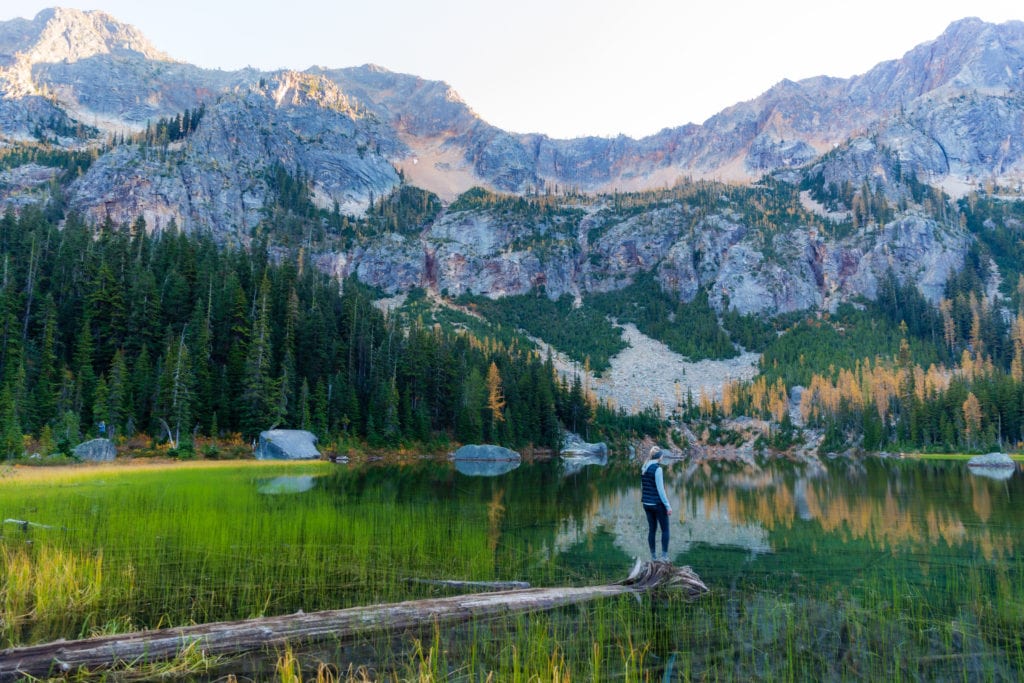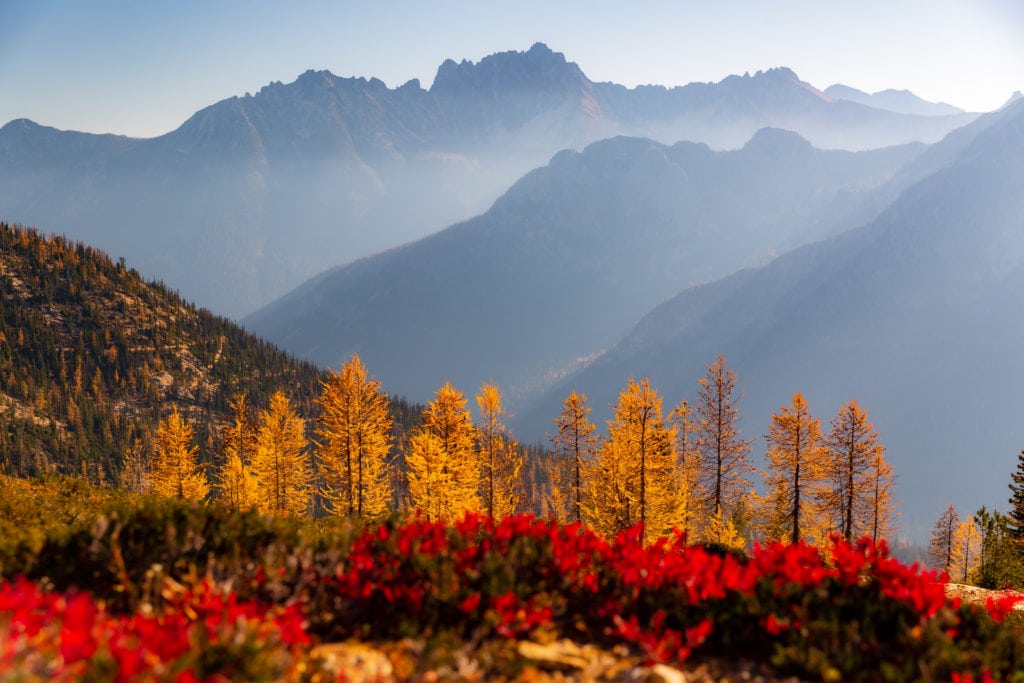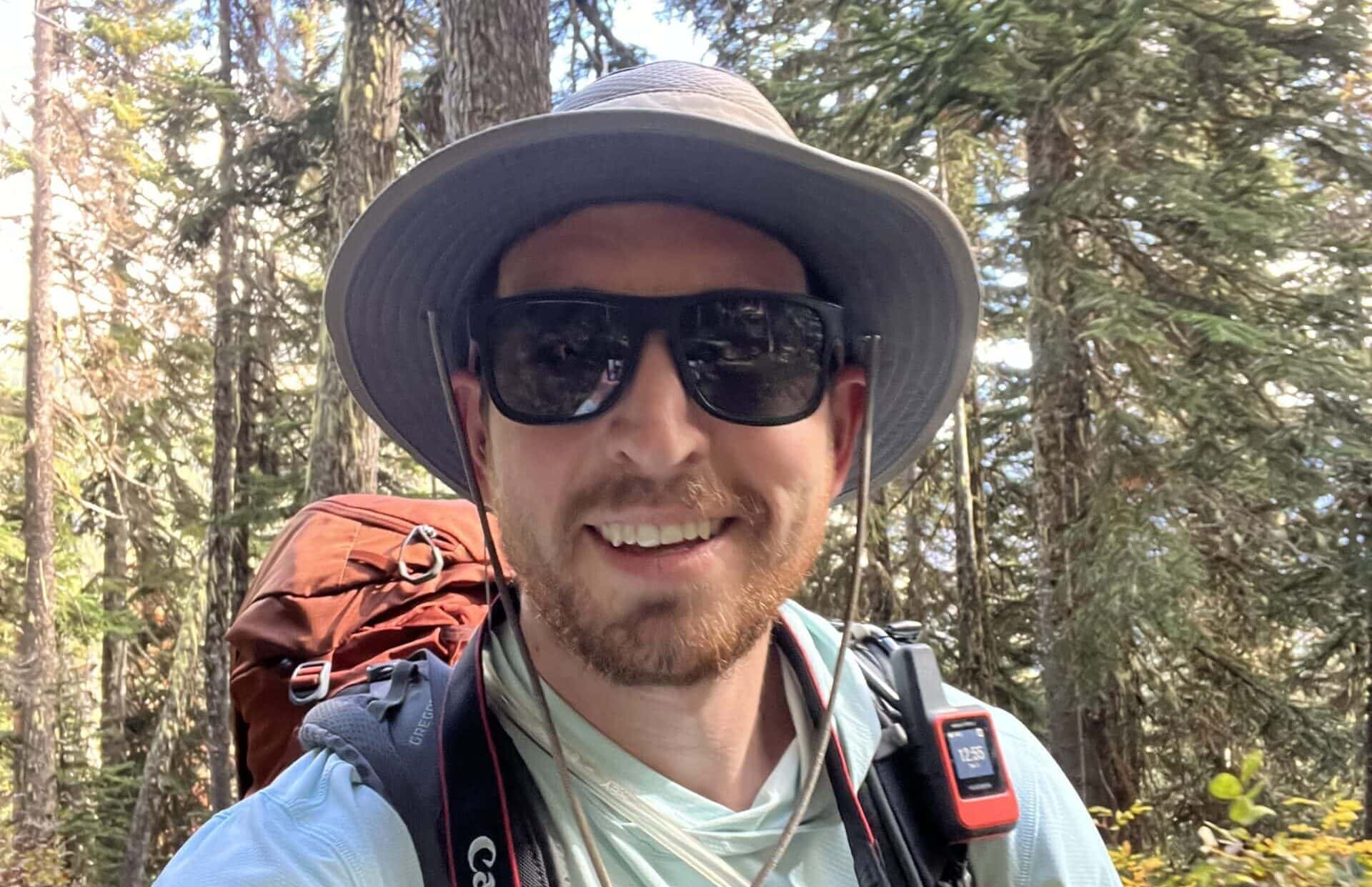Cutthroat Pass Trail Guide: A tremendous larch-filled backpacking trip
Backpacking the Cutthroat Pass trail was one of the most epic overnight trips I’ve ever taken. We were lucky that warmer weather had stayed in Washington, allowing us to continue backpacking well into the middle of October.
Inside, I’ll dive into everything you need to know about backpacking here and show you some of the epic photos that will hopefully inspire you to come out and see it for yourself!
Why you can trust me: You can trust that this blog is authentic and real because I actually spent time here, and I recommend it to everyone. I try to use my blog like I’d talk to my friends, and the Cutthroat Pass trail is one you’ll be stoked about!
Backpacking Cutthroat Pass in the North Cascades
Methow Valley sits on the eastern side of Washington’s North Cascades, past most of the region’s crowded hikes. It’s not much different from its sister valley, just on the other side of Washington Pass. But fewer people visit these majestic trails, making this a more enjoyable and natural hiking experience.
After hours of planning due to smoky skies throughout Washington, the only area with decent air quality was the eastern edge of the Cascades. And because fall was beginning to fade, we wanted one more trip into the laches and decided backpacking Cutthroat Pass was the perfect option.
So we geared up and made sure to have lots of warm clothes, with lows expected to hover in the mid to upper 30s.
From Seattle, it’s about a 3.5-hour drive. Usually incredibly picturesque, this time, thanks to air quality ranking as the worst in the world, visibility was almost zero. Additionally, the smoke was so overwhelming we put on N95 masks as we drove through the worst parts near Newhalem.

Quick Cutthroat Pass hiking details
- Trailhead: Cutthroat Lake or Via the PCT here
- Length: 12 miles round trip
- Elevation Gain: 2,500 feet via Cutthroat Lake trailhead
- Difficulty: Moderate
- Best Place to Sleep: At the pass or the 4.5-mile mark
Planning your trip to hike or backpack Cutthroat Pass
When is the Best Time to Visit?
Summer and fall are the best times to visit Cutthroat Pass and hike in the North Cascades. The weather is absolutely perfect during these seasons, and the long days will let you explore to your heart’s content! If you’re looking for great fall colors, the beginning of October is perfect.
Things to keep in mind when backpacking Cutthroat Pass
You will have to carry all of your water to your campsite (unless there’s some snow runoff you find, but that will only be early in the season). Additionally, camping at the literal cutthroat pass can be incredibly windy. However, I found being about a mile below was an excellent shelter and kept us warmer.
Drive time from Seattle
This is the hard part about backpacking the Cutthroat Pass trail. The drive time from Seattle is close to 3.5 hours via Highway 20. However, if you’re only hiking Cutthroat Pass, this can be a long drive for only 5 hours on the trail.
Trail Report: Backpacking Cutthroat Pass Trail
Once we broke through the smoke plume beyond Ross Lake, it was like entering another world. With blue skies above us, we were elated at the prospects of a smoke-free trip backpacking Cutthroat Pass out in Methow Valley.
By 2 p.m., we had laced up our boots and begun the two-mile trek to Cutthroat Lake. This short trail is nearly flat and suitable for both kids and adults. Even with moderately heavy packs, the miles went quickly, and soon, we were enjoying a quick break at the lake surrounded by larches.

Camping Below Cutthroat Pass
While most hikes in the North Cascades are butt burners that send you on a straight line to the top at a less-than-ideal angle, backpacking Cutthroat Pass is a gentle incline that allowed us to speed through miles without feeling exhausted. It’s so good of a trail that it’s a favorite of mountain bikers, so keep that in mind when hiking.
Thanks to our late start, we knew we weren’t going to sleep at the top – which was fine as it would have been even chillier with no protection from the wind. (And we would later learn that it was windy that night.) So even though it would have been awesome to be at the top, we found a 10/10 spot amongst the larches that offered more privacy and protection from the elements.

We camped less than two miles from the top, off to the right of the trail, opposite a sea of small larches. There were two to three spots, large enough for a few friends to all camp near each other. Stoke levels were very high as we set up camp and explored all the larches around us. Miles below us, Cutthroat Lake glistened in the evening light.
After exploring, the sun set fast behind the ridge line, and the temperatures soon plummeted. We quickly boiled water and got dinner going while moving around just enough to stay warm without being too obnoxious.
Once our alarms dinged, signaling our freeze-dried food was done, we looked like ravenous hyenas scarfing down our piping-hot pasta. No matter what anyone says, there’s no such thing as a bad freeze-dried meal in the backcountry. Actually, it’s about the best thing on earth in those 15 minutes of eating.
Washington Milky Way
With how late the sun sets in Washington during the summer, it sometimes provides a chilling effect on shooting the Milkyway or other night photography. After a long day hiking, the idea of being up until midnight doesn’t always seem enticing. But in the fall, shooting the stars are a bit more manageable when the sun dips below the horizon at 6:30 pm.
So that’s what we did. It’s funny how even though it is pretty cold when you are focused on capturing a shot, you hardly notice. After a while, we tired and headed to bed, knowing our wake-up call would happen soon enough.


A Sunrise Mission to Cutthroat Pass
Typically, you can’t try hard enough to get me out of bed in the morning. But when there’s a sunrise mission to a beautiful location, I’m probably already awake and mentally ready for some natural beauty.
This was that time.
When my watch alarm went off, I was already awake, slowly finding the courage to get out of my sleeping bag. But before long, the two of us had put on warm clothes, packed up, clicked on our headlamps, and begun the two-mile uphill push.


Usually, these Washington hikes can be brutal, but as mentioned before, the trail is gradual, and we cruised. As the sun rose, so did we, knocking out switchback after switchback with our eyes trained on the larch-filled pass above us. Before we knew it, we were reaching the pass and the Pacific Crest Trail connection at the same time the sun peaked over the jagged easterly peaks of the North Cascades.
As you can imagine, we were a bit hungry because we skipped breakfast and coffee to hike. So we found a nice spot to watch the sunrise and enjoyed coffee and oatmeal. Watching the sea of larches become backlit, and glow was beautiful. Talk about the perfect way to start the day!
Epic Views of the Washington Cascades
With bellies full and caffeinated, we explored more of the pass, venturing higher up. The beauty was breathtaking and captivated us as we moved past larches with varying degrees of fullness.



After a while, with the sun creeping higher in the sky, it was time to return to our campsite and begin the trek to the lake and then to the car. It had been a magical 15 hours out in nature and one we’d remember forever as our first larch backpacking experience.
Gear Suggestions for Backpacking Cutthroat Pass in the North Cascades
Hiking Clothes
Hiking Shoes
Hiking Extras
Final thoughts on backpacking Cutthroat Pass via Cutthroat Lake
- You cannot sleep within 1/4 mile of Cutthroat Lake. There’s no suitable area to sleep until about the 4.5-mile mark, where it’ll flatten out. Some of the Washington hikes with lakes are pretty stringent about keeping campers away from the lakes.
- The Mazama Store in Methow Valley is perfect for stopping after your overnight trip. The baguettes are phenomenal.
- The Cutthroat Pass trail is honestly one of the best I’ve experienced in Washington.
- You can reach Cutthroat Pass Trail via the PCT, but it’s a more crowded trail. The larches are not as numerous, nor can you get as close to them as you hike up.
- Backpacking Cutthroat Lake is perfect for newbies – remember to have enough water with you
Until next time adventurers, take care and be safe.
Subscribe to my blog!
New to hiking? My guide will get you up to speed!
Follow my adventures on TikTok, Facebook, and Instagram.
Are you an outdoors brand or tourism board and would like to work together? Please take a look at my photography portfolio here.


